
Lakes Relatively Still Water


Lakes Objectives:
- Classify lakes based on productivity and identify three different lake zones.
- Identify microscopic and macroscopic photosynthetic pond organisms.
In this section we are at different lakes.
Lakes contain water that primarily stays within a basin. There can be water movement on the surface or some water entering and leaving, but the bulk of water is not moving from one point to another (like in a stream).
Ponds are small lakes that can be strongly impacted by seasonal changes, sometimes completely freezing or drying out.
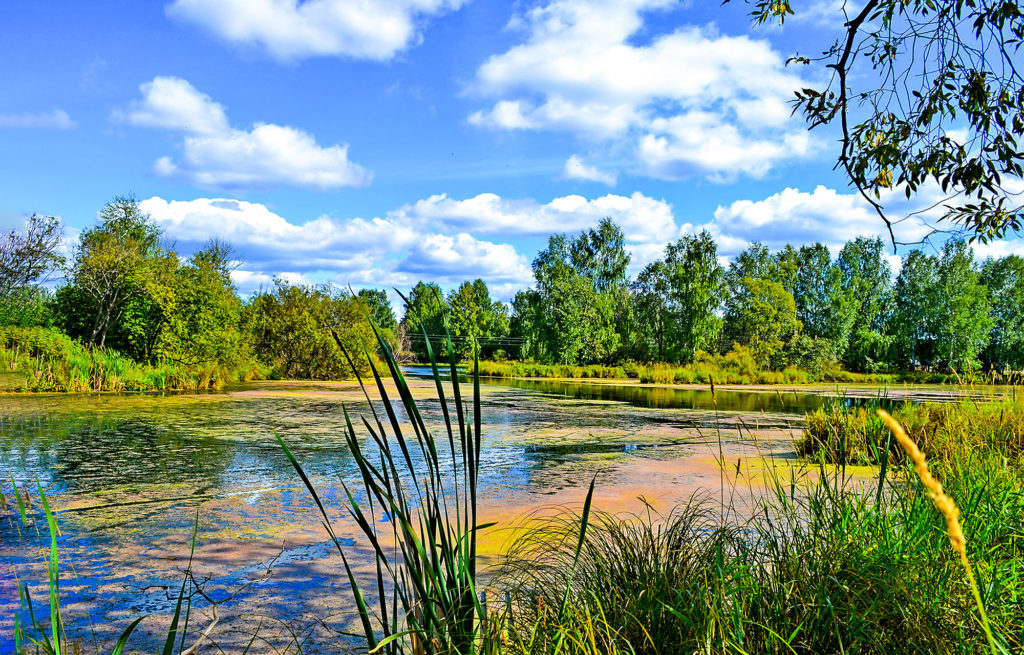
Lakes are classified based on productivity, the amount of photosynthesis occurring in lake producers.
Oligotrophic lakes have low levels of productivity, these are often clearer water.
Mesotrophic lakes have a middle level of productivity, enough photosynthesis to support a more complex food web.
Eutrophic lakes are high in productivity, so high they can be green in color.
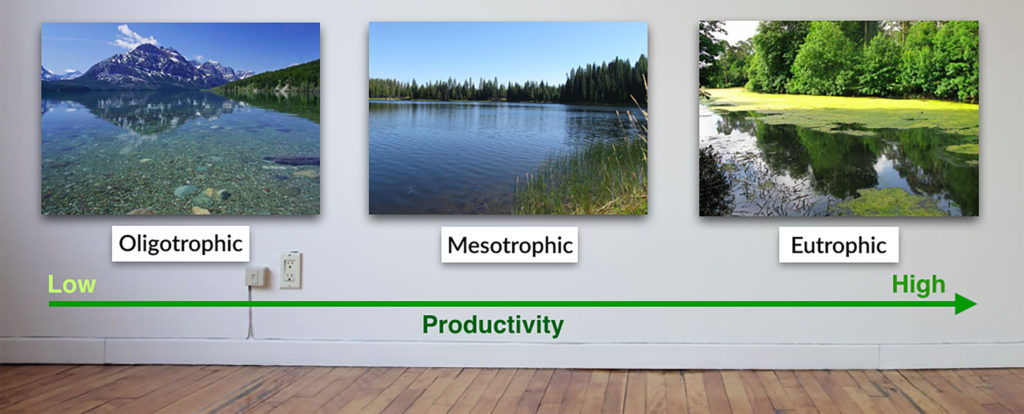
A highly eutrophic lake or pond can be “too much of a good thing.” This video explains why.
Crater Lake is an example of an oligotrophic lake. Productivity is low and the water is clear to well over a meter below the water’s surface.
Within a single lake, there are different zones that are impacted by the amount of available light and nutrients. Each zone can have its own organisms.
The Littoral lake zone is the area near shore that is shallow enough for light penetration. Many amphibians and aquatic insects spend part of their life cycle here.
The Limnetic lake zone is the open water area that sunlight penetrates. Many large fish swim here.
The Benthic lake zone is the bottom, below the sunlit limnetic zone. Although light is low, nutrients are high and scavengers like crayfish and catfish can be found here.
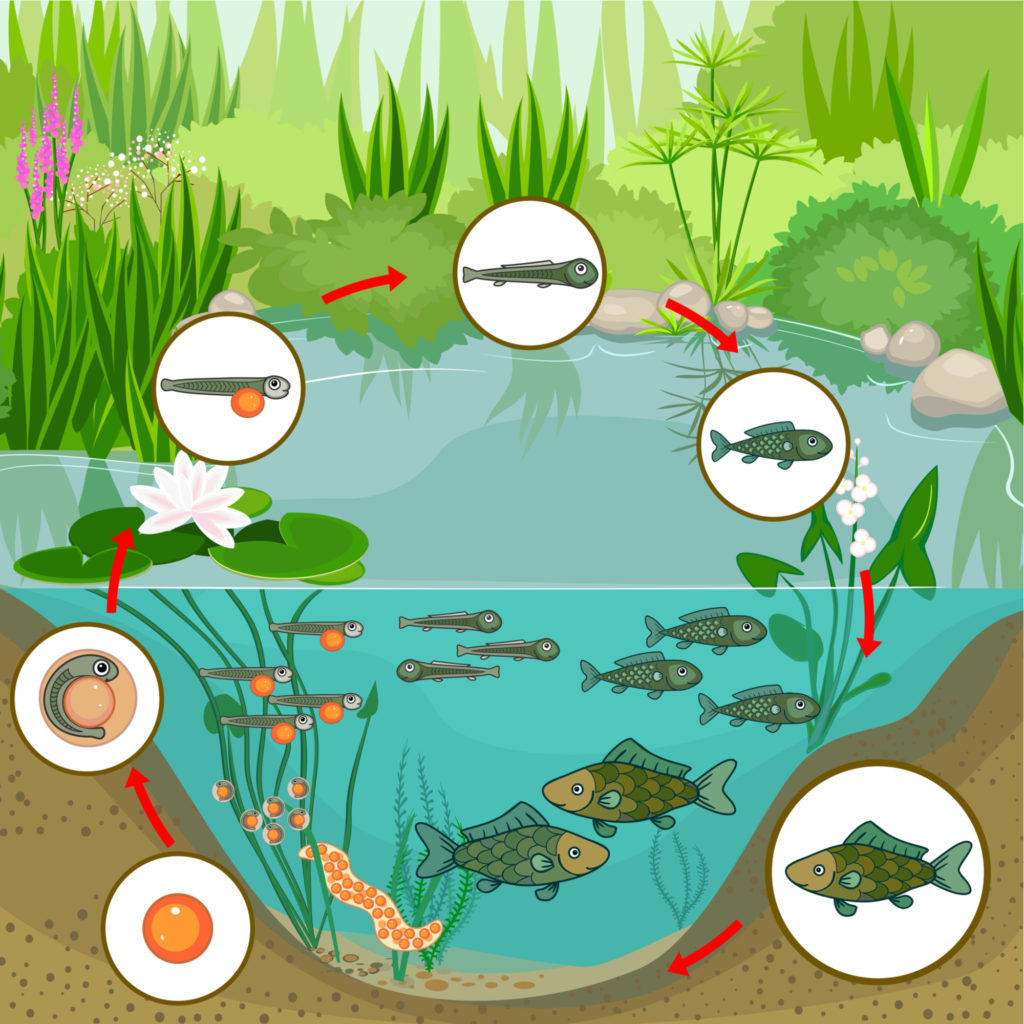
Some species utilize different zones in a lake during different life stages. For example, fish eggs may be laid on plants in the near shore littoral zone, but later stages of larger fish may swim and eat in the open limnetic zone.
For this guide’s media piece you will be identifying organisms from a small pond. To complete this successfully, we will start by introducing common categories of pond organisms and then introduce the assignment.
This video introduces some of the consumers and producers, both microscopic and macroscopic, that we may encounter in a pond sample.
Freshwater Producers

Eutrophic lakes and small ponds are typically very productive, meaning there are many producers, including algae and plants. Producers carry out the process of photosynthesis.
These are common microscopic producers that you are likely to find in a lake or pond.

Cyanobacteria

Algae

Diatoms

Euglena
These are larger producers; plants with strategies for obtaining sunlight.

Elodea

Azolla

Water Lily
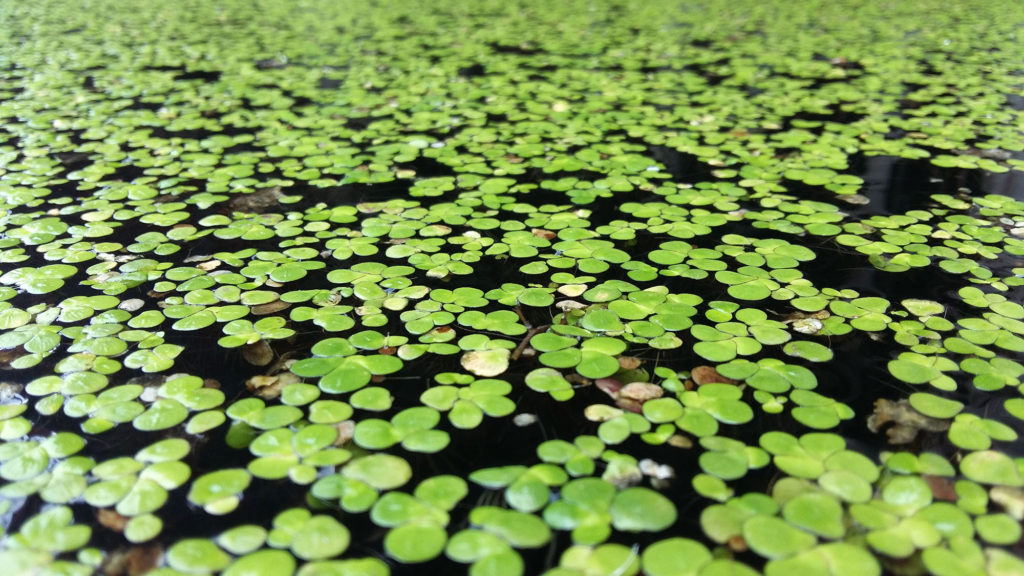
Duckweed
Duckweed and Azolla are not rooted into the soil like water lily plants; they float on top of the water. From earlier this term, what organims live within the Azolla, providing nitrogen?
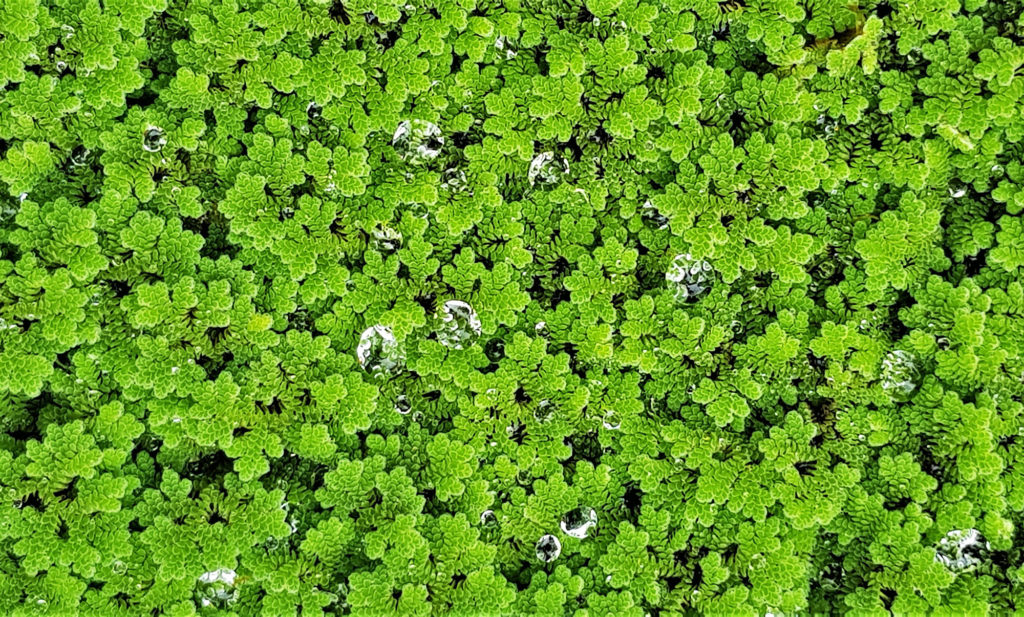
Azolla
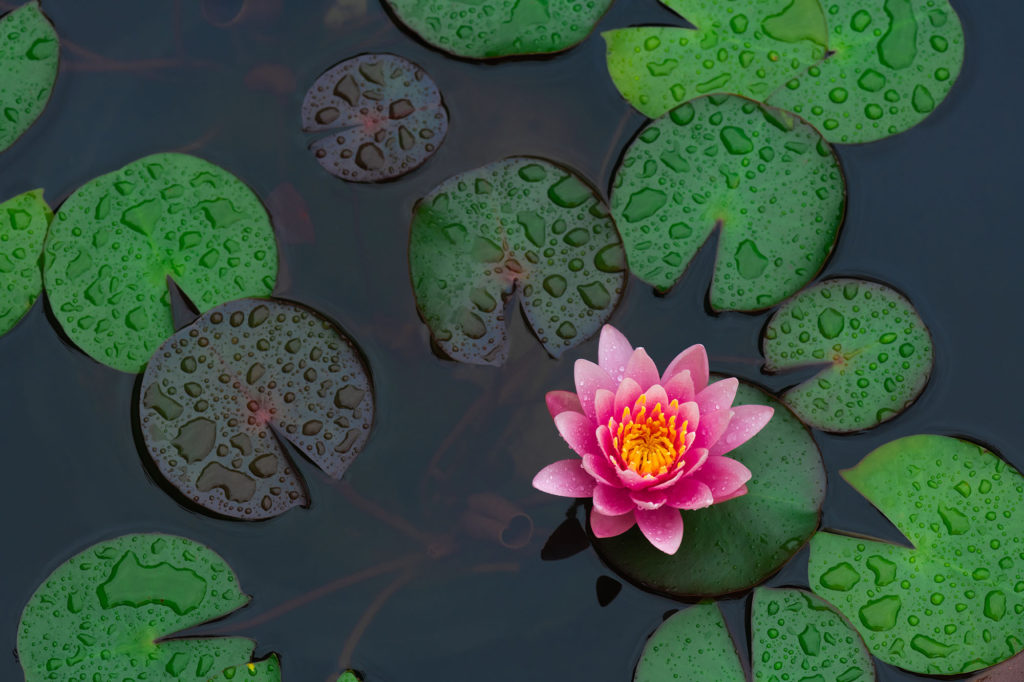
Aquatic plants found in local ponds have strategies for continuing photosynthesis in conditions that could impact gas exchange or light availability.
The leaves of this water lily plant have stomata located on the top of the leaves instead of on the bottom as you observed in an earlier lab. Why?
All three of the species below are submerged aquatic plants. Water is abundant, but what two other components of productivity can be limited?
Answer: light & nutrients
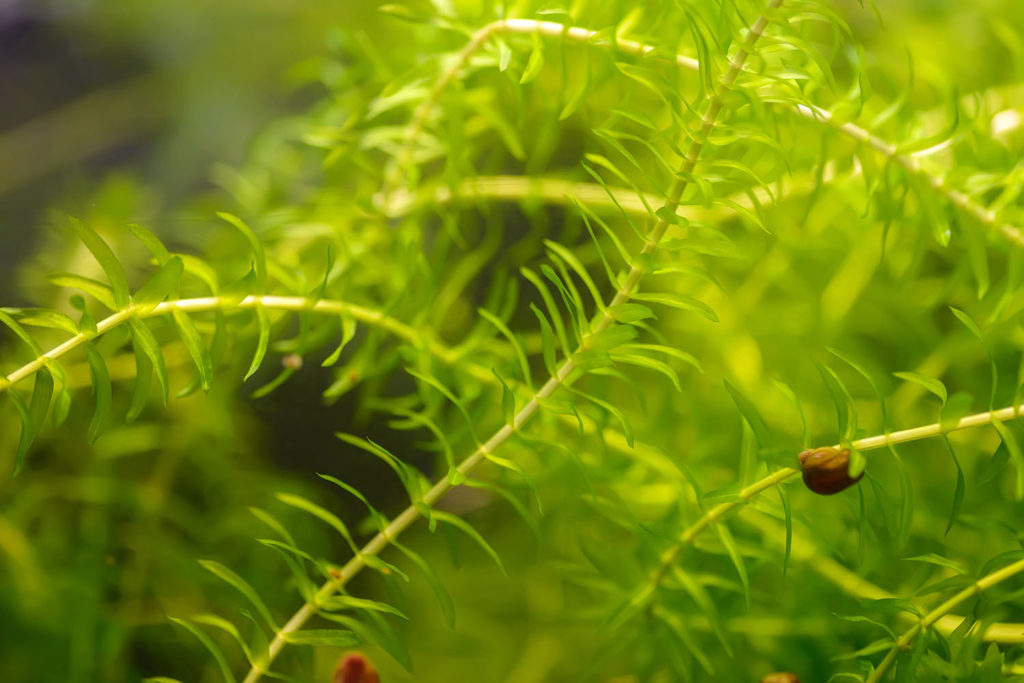
Elodea
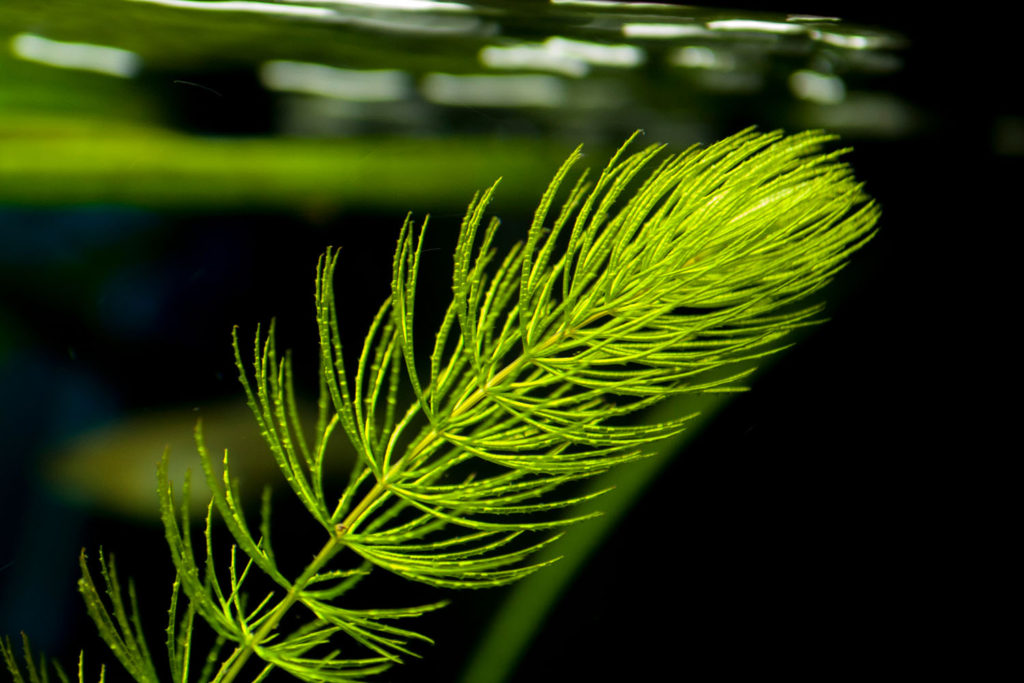
Hornwort
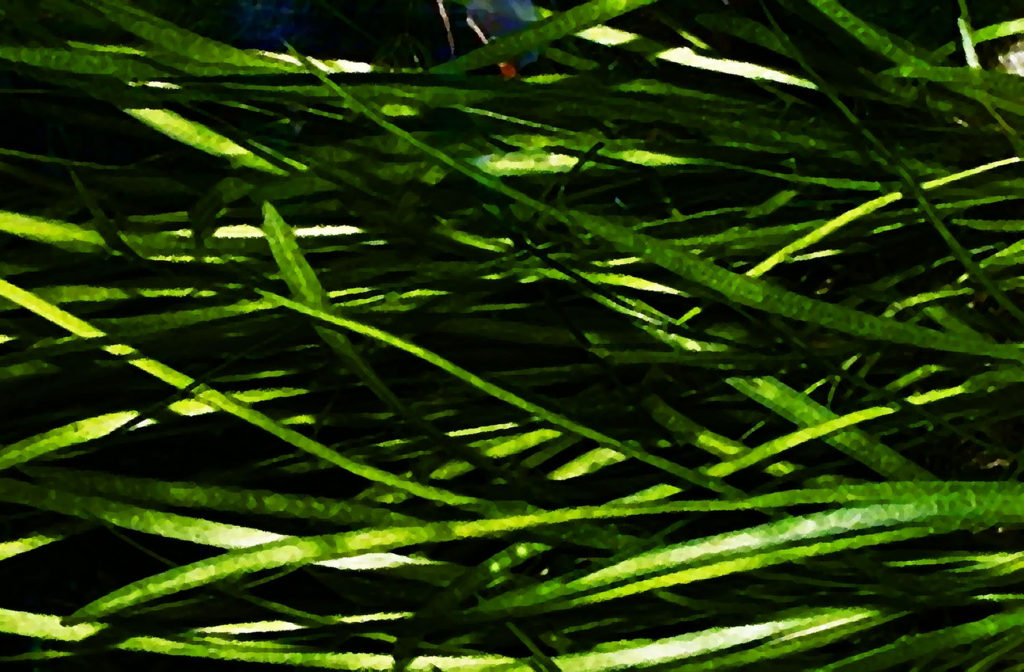
Vallisnaria
The next section introduces wetlands; part aquatic and part terrestrial habitats.

Check your knowledge. Can you:
- Classify lakes based on productivity and identify three different lake zones?
- Identify microscopic and macroscopic photosynthetic pond organisms?



